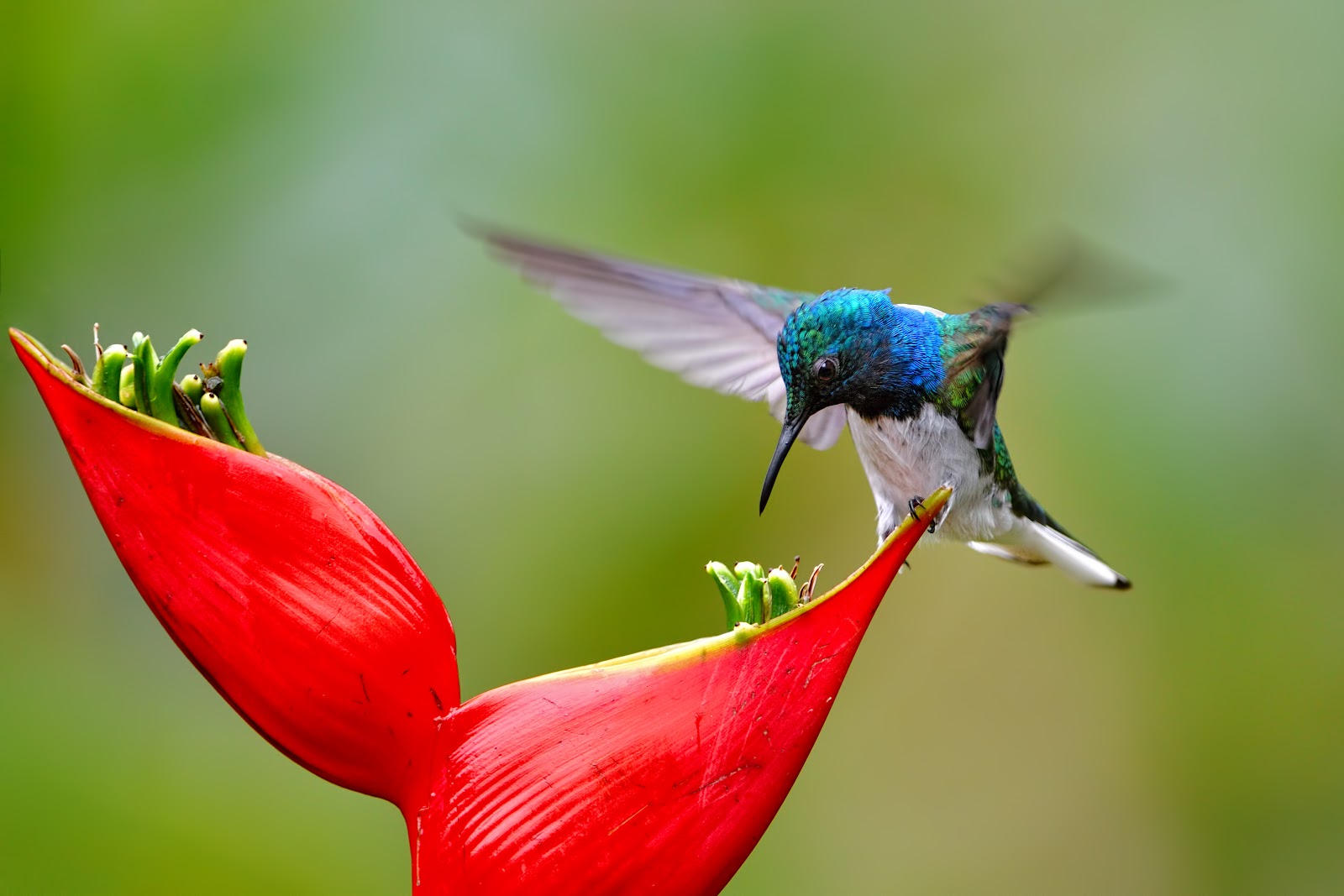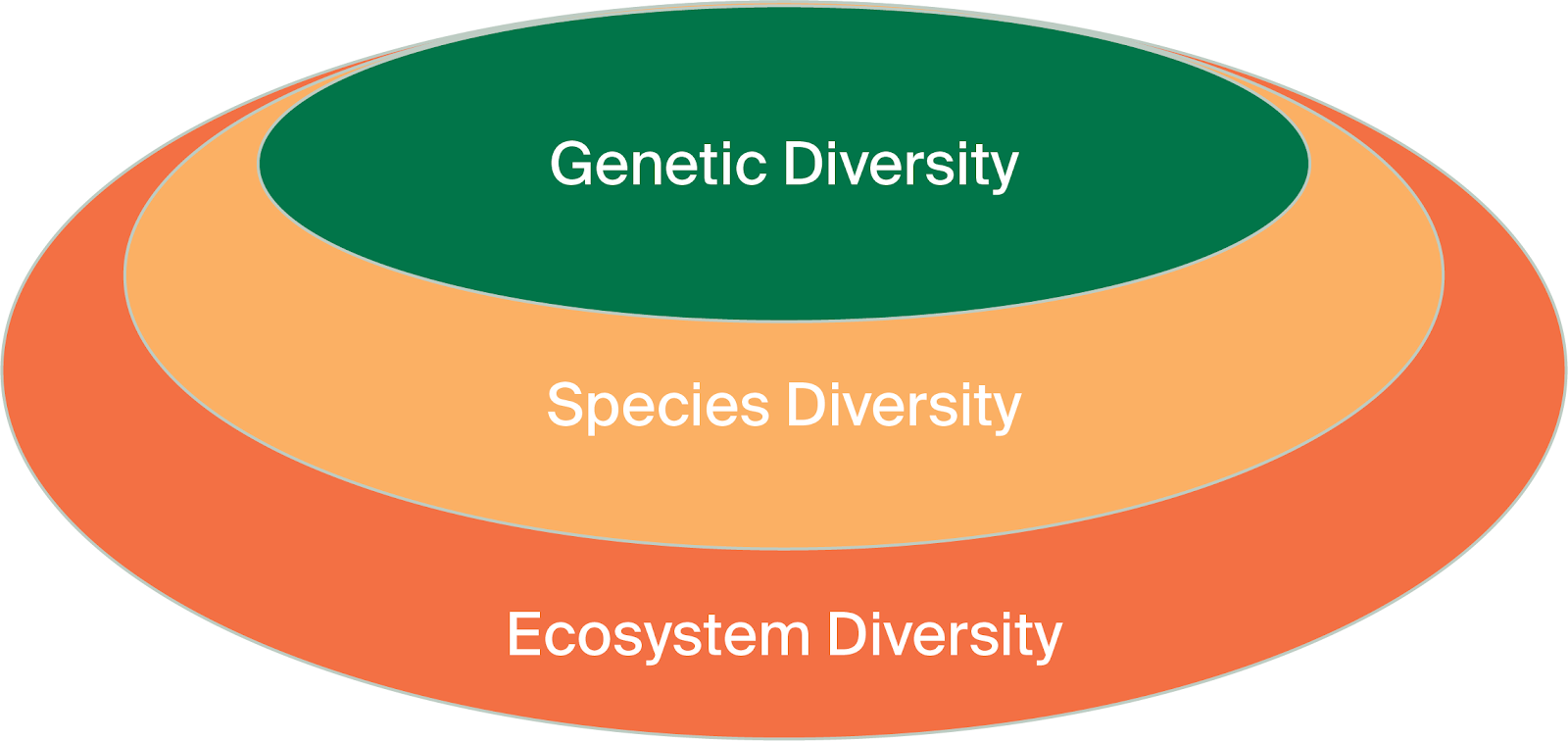Take a second and think of your favorite spot in nature. Maybe it’s in a forest, among grasslands, or on a beach...
Can you picture it?
Now, think about what you hear.
Maybe you heard waves crashing or wind blowing through some leaves. Maybe, you were even greeted by the singing of birds. Now imagine that singing turning into a cacophony of different songs, running together with the buzzing of insects and the gentle hum of wind blowing through the leaves. This symphony of sounds is a manifestation of the biodiversity that many of us interact with every day.

The term “biodiversity” often evokes images of lions, tigers, and bears (oh my!), which isn’t wrong, but shows how many people only associate biodiversity with animals they may see at a zoo. In the simplest (and broadest) sense, biodiversity is all the variation within and between living things. This can range from the individual genes of organisms, all the way to entire ecosystems! However, the most common usage is in reference to variation amongst individual species - just like with the different birds or the lions, tigers, and bears.

So, why care about biodiversity? If you don’t like the way one bird sounds, should you worry if its song gets removed from your favorite spot?
To put it simply: yes, you should. We all should.
Setting aside moral arguments over a species’ right to exist, or a duty of stewardship humanity might possess, there are pragmatic reasons to preserving biodiversity.
One perspective is that of risk. Fewer species of animals or plants (i.e., less biodiversity) means that there is more risk of harm to us. Think about this: if all oranges worldwide were to die off, sure, there would be many other crops humans and animals could eat. But imagine a steady decline of diverse types of crops — we’d be in big trouble.
We also rely on biodiversity in a very practical sense. Think about what is needed to grow avocados. Beyond the right climate and soil conditions, imagine all the different organisms that are needed along the way. For plants to grow, they require nutrients. These nutrients are provided by the work of decomposers, like worms, fungi, or insects. As the plant grows and becomes ready to bear fruit, pollination becomes necessary. For avocado trees, the pollinator is most likely a bee. You can see now that without these different organisms, none of us would be able to enjoy avocados, or any other fruit or vegetable. Biodiversity matters!
Different organisms carry out similar processes for a huge variety of plants. That being said, a salad of six different fruits and/or vegetables may be made up of six different sets of decomposers, protectors, and pollinators. It’s easy to see how this can add up quickly.

Despite the incredible importance of biodiversity, we face challenges in preserving it. To feed a growing global population, we’ve converted more and more ecosystems into farmland, which, in the process, is destroying ecosystems that are home to countless species. And without a home, many of these species cease to exist and biodiversity suffers. Furthermore, in efforts to keep pests away from crops, farmers are often using pesticides that are potentially harmful to other organisms, including the very pollinators that make farming possible in the first place. All of this reduces biodiversity and the wonderful things it provides.
So what can be done?
One way to preserve biodiversity is to look at how we are producing food. Of the different philosophies that exist, most generally fall within a range of “land sparing” and “land sharing.” Land sparing more closely resembles much of what we’ve done in recent history, in which agricultural production is intensified to minimize the amount of land that needs to be used in production. Land sharing takes the opposite approach by expanding the amount of land in production but making the land more hospitable for other species. To learn more about these concepts, check out our land sparing vs. land sharing blog based on Dr. David William’s research.
However, regardless of sparing or sharing, food waste causes more land to be converted than what is necessary. That’s where Apeel can help! Apeel uses plant-derived materials to add a little extra "peel" to keep produce fresher, longer. The increased longevity that Apeel provides for fresh produce lessens the amount of spoilage, therefore reducing food waste.
Less food waste means that less land needs to be used to generate the same amount of food. This idea is captured in a metric called “land occupation,” which takes the whole life cycle of produce into account. Our sustainability team measures land occupation and uses the results to both quantify the environmental benefits of Apeel and gain insight into how we can improve the product to rely on even less land in the future.
So the next time you are out in nature, listen closely. You are witnessing nature’s wondrous orchestra, and biodiversity is its conductor. Join us in helping to preserve critical habitats by choosing food-waste (and land-waste) fighting Apeel-treated produce.
Do you want to learn more about Apeel? Do you want to get in touch with a sales representative to bring Apeel to your farm? Please contact us on the Apeel Contact page. We look forward to hearing from you!


